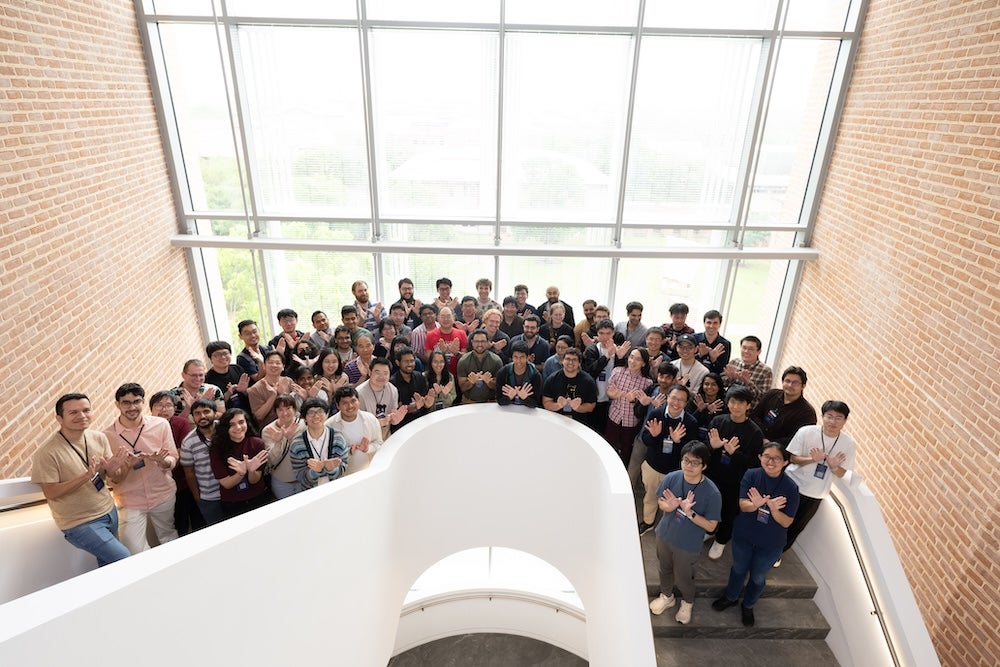More than 80 scientists from around the globe gathered at Rice University April 22-25 for the School on Electron Correlations and Topology, a workshop focused on advancing the understanding of electron correlations and topological quantum materials. Hosted by Rice’s Extreme Quantum Materials Alliance in collaboration with the Smalley-Curl Institute, the four-day event featured lectures, discussions and collaborative exchanges among leading theorists and experimentalists in the field.

The workshop provided a platform for researchers to evaluate recent advances and outline future directions in the rapidly evolving field of quantum materials. It also featured a poster competition, student-led discussions and social events designed to enrich the experience of junior researchers. By fostering dialogue across disciplines, the program aimed to nurture the next generation of physicists working at the intersection of correlation physics and topology.
“This event is about building bridges between different subfields, theories, experiments and generations of scientists,” said Yonglong Xie, assistant professor of physics and astronomy and a co-organizer of the event. “We designed the program to foster deep learning for both seasoned researchers and those just beginning their careers in this exciting field.”
Exploring new frontiers in quantum matter
The workshop's sessions explored critical challenges in understanding how strong electronic interactions influence topological phenomena in condensed matter physics. Participants examined topics ranging from basic concepts in correlated systems to advanced studies; novel material platforms for realizing topological flat-band systems; theoretical modeling of correlated topology; new experimental probes of correlated topological phases; quantum entanglement in strongly correlated matter; and out-of-equilibrium dynamics of many-body systems.

The program also spotlighted new experimental platforms such as moiré materials and kagome metals, which have revealed unexpected electronic behaviors and novel quantum phases.
“The quantum field is entering a transformative phase,” said Qimiao Si, the Harry C. and Olga K. Wiess Professor of Physics and Astronomy and a scientific adviser of the event. “By combining insights from correlation physics and topology, we are beginning to uncover entirely new types of quantum phases. The cross-pollination of ideas here has been inspiring.”
Event speakers detailed the theoretical modeling needed to predict and classify these behaviors, along with emerging experimental techniques capable of measuring them with unprecedented precision. Lectures were delivered by a roster of international physicists, including Ming Yi, associate professor of physics and astronomy at Rice; Masaki Oshikawa of the University of Tokyo; Frank Schindler of Imperial College London; Yong-Baek Kim of the University of Toronto; Alex Thomson of the University of California, Davis; and Jeong Min Park of Princeton University.

Additional speakers included Veronika Sunko of the University of California, Berkeley; Steven White of the University of California, Irvine; Martin Claassen of the University of Pennsylvania; Ananda Roy of Rutgers University; and Maia G. Vergniory of the Université de Sherbrooke, who also served as a scientific adviser for the event.
Co-organizers of the workshop also included Shouvik Sur and Fang Xie, postdoctoral associates in physics and astronomy.
The workshop was co-sponsored by the Department of Energy, National Science Foundation, Institute of Complex Adaptive Matter, Rice Global, Rice Advanced Materials Institute and Vannevar Bush Faculty Fellowship’s project on extreme quantum materials.
Video by Jorge Vidal/Rice University.

